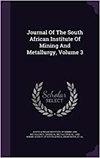金子都到哪里去了?
IF 0.9
4区 材料科学
Q3 Materials Science
Journal of The South African Institute of Mining and Metallurgy
Pub Date : 2023-06-08
DOI:10.17159/2411-9717/1902/2023
引用次数: 0
摘要
威特沃特斯兰德盆地含有迄今为止发现的最多的黄金,从1886年发现到现在一直是采矿的地方。多年来,南非是世界上最大的黄金生产国,几乎所有的黄金都来自威特沃特斯兰德。自2000年以来,由于黄金产量下降,南非的排名已经回落了几个位置。这其中有许多复杂而多样的原因;然而,威特沃特斯兰德盆地黄金资源的减少并不在其中。据笔者所知,文献中没有关于威特沃特斯兰德盆地剩余金的合格估计。本文收集了多个来源的采矿数据,并采用基本黄金会计和误差分析方法,对威特沃特斯兰德盆地的黄金剩余量进行了估算。它包括现有和废弃矿山中的地下黄金,评估过的矿石资源和垃圾场中的黄金。从1887年到2019年的汇编数据显示,威特沃特斯兰德矿山生产了50200吨黄金,而据估计,还有48100吨黄金留在地下,在矿山租约内外,还有1600吨黄金在尾矿中,还有数量不详的黄金在岩石堆中。以目前的采矿方法,几乎所有这些黄金都无法开采,在任何黄金被归类为符合代码的资源或储量之前,采矿方面的重大技术发展都是必要的。为了赢得这个奖项,采矿业将不得不重新思考其采矿方式,无论是在旧的采矿租约还是在未开发的土地上。它还必须找到防止黄金盗窃和非正式采矿的有效手段,这两种行为正在上升。本文章由计算机程序翻译,如有差异,请以英文原文为准。
Where is all the gold?
The Witwatersrand Basin contains by far the most gold ever found, and has hosted mining from its discovery in 1886 to the present. For many years, South Africa was the world's largest producer of gold, nearly all of which came from the Witwatersrand. Since 2000, South Africa has fallen back several positions because of declining gold output. There are many complex and varied reasons for this; however, declining gold resources in the Witwatersrand Basin are not one of them. As far as the author knows, there are no qualified estimates in the literature of gold remaining in the Witwatersrand Basin. This paper collects mining data from several sources and then, using elementary gold accounting and error analysis, attempts to estimate the amount of gold remaining in the Witwatersrand Basin. It includes gold underground in existing and defunct mines, in evaluated ore resources, and dumps. Compiled data from 1887 to 2019 shows that 50 200 t of gold were produced by Witwatersrand mines, while it is estimated that a further 48 100 t remain underground, both within and outside of mine leases, a further 1 600 t on the surface in tailings, and an unknown amount in rock dumps. Nearly all of this gold will remain inaccessible with current mining methods, and major technical developments in mining will be necessary before any of the gold can be categorized as a code-compliant resource or reserve. To win this prize, the mining industry will have to rethink its approach to mining, both in old mining leases and in the unexploited ground. It will also have to find effective means of preventing gold theft and informal mining, which are on the rise.
求助全文
通过发布文献求助,成功后即可免费获取论文全文。
去求助
来源期刊
CiteScore
1.50
自引率
11.10%
发文量
61
审稿时长
4-8 weeks
期刊介绍:
The Journal serves as a medium for the publication of high quality scientific papers. This requires that the papers that are submitted for publication are properly and fairly refereed and edited. This process will maintain the high quality of the presentation of the paper and ensure that the technical content is in line with the accepted norms of scientific integrity.

 求助内容:
求助内容: 应助结果提醒方式:
应助结果提醒方式:


